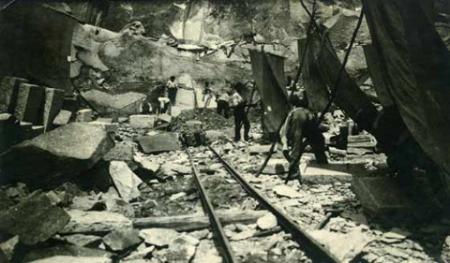 Granite owes its name to its particular granulation, whereby the grains can be small or medium-size. Therefore the Latin word granum has the meaning of granulous.
Granite owes its name to its particular granulation, whereby the grains can be small or medium-size. Therefore the Latin word granum has the meaning of granulous.
In the course of millions of years during a very slow process of change (called matamorphosis) the mineral impurities (which are located in the sedimentary grains or stratums in the interior of lava flows) have moved less and less because of the cooling, so as to crystallise in consequence of the high pressure and the great heat. During these processes of change was originated a compact material, hard and resistant, but full of beautiful veins. Impurities as clay mineral, mud, sand, iron oxid and pebble stone blobs have lead to the various granite colorations (red granite, black granite, blue granite, etc.). The veins and colorations are even able to satisfy a fancy and aesthetically sophisticated taste.
the hardness of granite leads to many problems during processing, granite has already been used in the Ancient world: the technical properties and the bright surface made early cultures appreciate granite as far back as in the Ancient world.
Granite is not only used for decoration: the extraordinary properties, the hardness and resistance are particularly appreciated in modern architecture, especially for flooring. The strong resistance of granite against acids and weather conditions make it the preferential material for monumental architecture: the Egyptians for example used granite to build temples and obelisks or to face large surfaces (as the pyramids of Khafre and Menkaure).
In the following news of Marmi Rossi we'll plunge into history to report how granite was used in the Ancient time and in various countries.
Continue to visit our column News -> Events and News, to discover curiosities, use and realisations of this precious material.
